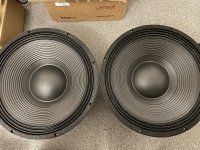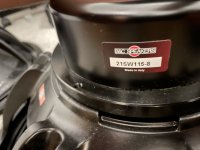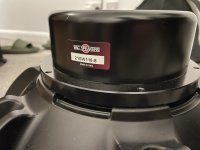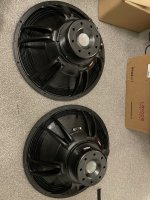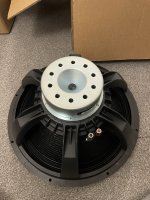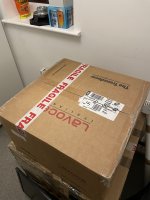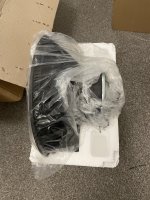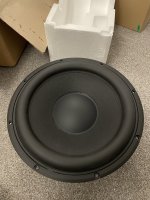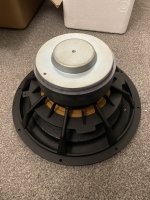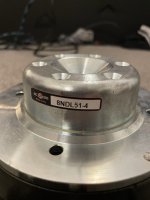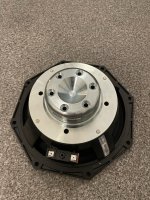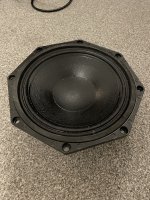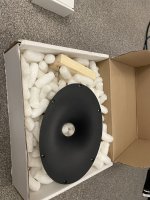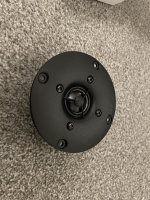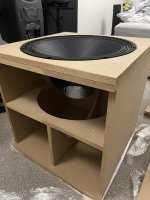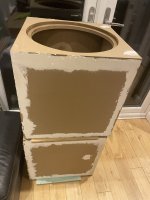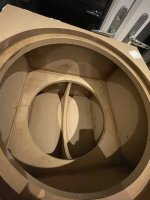I’d like to introduce some new, partly-developed speaker performance metrics I’ve been chewing on. These could be developed much further with the help of others. I’d love to hear your ideas.
Box types suffer from stereotypes. “Sealed boxes are inefficient” or “Transmission lines are oversized” or “Dipoles have no bass” or “Horn speakers have terrible frequency response.” And while those reputations hint at certain truths, great designs defy the stereotypes. It always comes down to quality of implementation. The less-common box types are often made with drivers that were optimized for some other box type, and sometimes fall far short of their potential.
Each box type just applies different constraints to the same fundamental limits. The laws of physics still apply.
So for example sealed and reflex designs operate on 3D volume. TLs and horns operate on length and area. Open Baffles have the interesting quality of operating on 2D surface area.
Trading off 2D surface area against 3D volume is super interesting. It means if you have a woofer with low depth (such as the
Stereo Integrity BM-11) you can create a large speaker with low F3 that still takes up very little 3D volume in liters; and has a very slim profile.
This could be reduced to a “Hoffman’s Iron Law-Like” formula, a metric like:
Acoustic watts per liter per Hz (3D box)
vs
Acoustic watts per square meter per Hz (2D Open Baffle)
[these metrics are my very intuitive guesses; once properly formalized they will look somewhat different]
and these could be further refined into practical engineering heuristics, like
dB per liter per Hz (3D)
vs
dB per liter per Hz (2D)
and further
dB per kilogram per Hz (3D)
vs
dB per kilogram per Hz (2D)
and
dB Hz per dollar (3D)
vs
dB Hz per dollar (2D)
and
dB Hz per watt (3D)
vs
dB Hz per watt (2D)
This helps us formulate some interesting new questions.
If you define the problem as WEIGHT / MASS per unit of acoustical output, OB’s can become extremely attractive under certain circumstances. The stereotype is that they are expensive but commercially OBs could be quite economical.
So for example 3D volume-based box speakers always have to have 6 sides.
But 2D surface area-based speakers (dipoles) can have as few as 1 side.
A “lambda” shaped U-frame has a front panel, triangular wings, no top, no bottom, and no back. This delivers CONSIDERABLE savings in weight and shipping cost (which is a huge contributor to the price of a commercial speaker system!!!)
It’s a lot less lumber as well. You spend more on drivers and less on wood and labor for construction. The
Walnut Dipoles can hold their own in SPL bass output very well with similarly sized speakers of other box types. Small but mighty.
Economically it is often less expensive to buy a 15” or 18” woofer and mount it on a big slab of live edge wood, than to buy an 8” or 10” woofer, build a 3D box and cover it with veneer. (And put a port in it.)
Plus the result is a lot closer to a piece of furniture that people will still enjoy 40 years in the future, than a conventional box where the veneer gets nicked and scratched.
Then there is the difference between voltage sensitivity and efficiency. I ran simulations and showed actual examples of a
“passive bass boost” circuit which boosts dipole bass 4-7dB. It does so by essentially converting voltage into current. The speaker with LC circuit has an impedance dip at its low frequency cutoff instead of a peak. It’s not technically more efficient, but it draws more current from the amps so it’s more sensitive in the low bass. Sometimes it’s easier and less expensive than DSP.
I took an acoustics class in college and I could probably work out how to formalize these heuristics if I put a lot of hours into it… but why not make this a group project?
We have some VERY smart people who hang out in this forum, some of whom have extensive modeling, mathematics and acoustics background.
New models and heuristics like this will shed light on what precise kinds of tradeoffs are optimal for each box type. This will lead to better drivers and better-engineered systems.
What do you think?
@Juhazi @CharlieLaub @nc535 @gedlee @Studley @Balthazarp